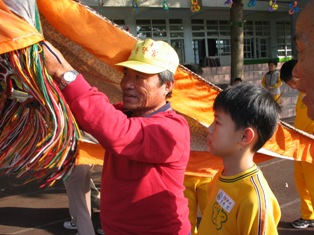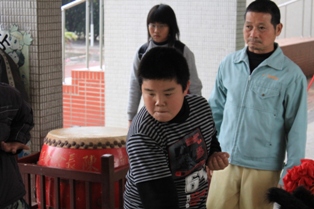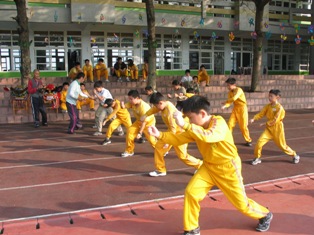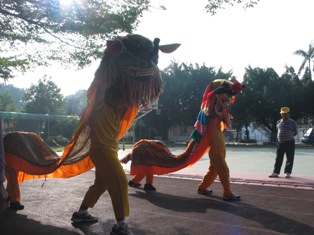











| Origins of classical lion dance |
| Origins of the Samba lion dance |
| Introduction of the Sijhou lion dance team |
| Origins of classical lion dance | |
Classical lion dance refers to the traditional lion dance art of Taiwan, or the lion dances or lion formations at regular festivals and temple celebrations. Lion dances are part of the unique Chinese culture. Lion dances not only liven up the atmosphere, but are also symbols of auspiciousness and fortune. Chinese all over the world like to have lion dance performance for festival events, New Year’s or holidays. There are many legends about the origins of the lion dance. For instance, the Qianlong Emperor of the Qing Dynasty dreamed of auspicious beasts, and ordered people to create the costume of these beasts, and then had two dancers wear the costume to dance and perform; it was also said that the Nian Beast troubled farmers by eating their farms, and the farmers used bamboo and cloth to make the appearance of Nian Beasts, so that two people can hide inside. One year later when the Nian Beast appeared again, the people banged on their pots and pans to make a lot of noise, and two people hid within the fake Nian Beast to scare away the real one; it was also said that people were hurt by lions in a little village in Foshan, Guangdong. The martial artists fought with the lions and ultimately won. In order to commemorate this, the villagers created a dance modeled after the lions who fought against the martial artists. However, in the information we found, the earliest recording of lion dances in the ancient books is in Wu Fang Shi Zi Wu, a music chronicle in the Old Tang Classic, which said: “Peaceful music was made in the time of Emperor in the Late Zhou, and is also called “Wu Fang Shi Zi Wu”. The lion creatures are from the southwestern barbaric realms of Tian Zhu lion country, and they are decorated with fur. People are inside them, and raise and lower them to imitate the creatures. Two people hold ropes and the controls to manipulate them. The five lions take their positions, and a hundred and forty people sing “Tai Ping Yue”. The dances are done with those who can hold the ropes, and their clothing take the form of Kun Lun.” From the records in Wu Fang Shi Zi Wu, we know that many of these legends were just stories, and the real origin should be before the Tang Dynasty. Since China is not a habitat for lions, the origins of lion dance should be related to the arrival of lions in China. In Buddhism, Wenshu Bodhisattva represents wisdom, and rides a lion to teach people about Buddhism, so people have a very good impression of lions, believing them to be sacred animals. Of course, they idolized lions. Buddhism was transmitted to China in the Eastern Han Dynasty, so the origins of lion dance may have come about when lions were apotheosized during the Han Dynasty, and together with the lion dance transmitted to the Western regions of China they were transferred or integrated into the theatrical works such as “Jiao Di” and “Man Yan”, gradually becoming a lion dance activity. At the beginning, lion dances only had dance movements. It was not until the Qing Dynasty that they were combined with martial arts and became a part of popular culture, and becoming what we now see as lion formations.
|
 |
 |
|
 |
|
 |
|
Reference: |
|
